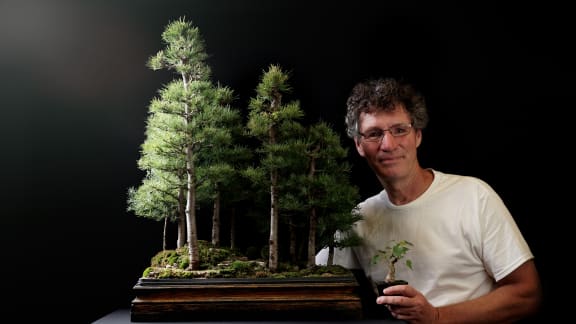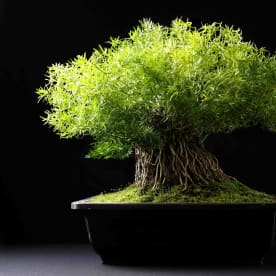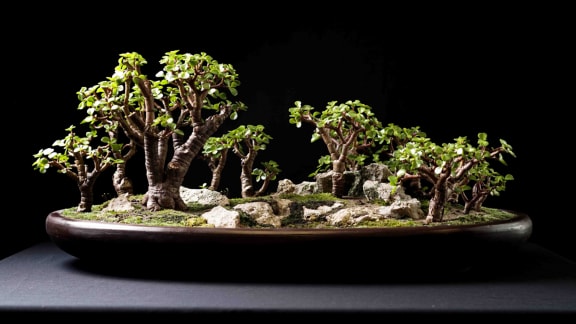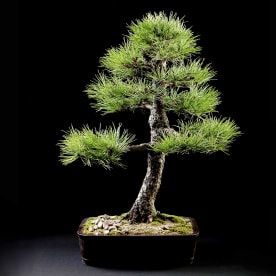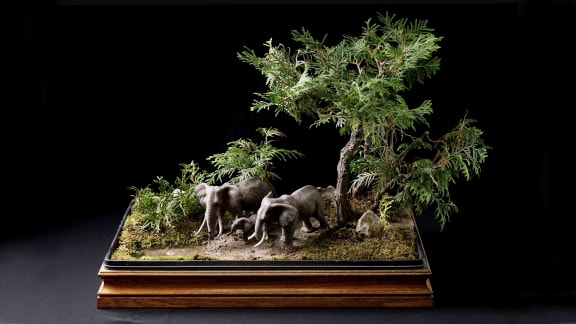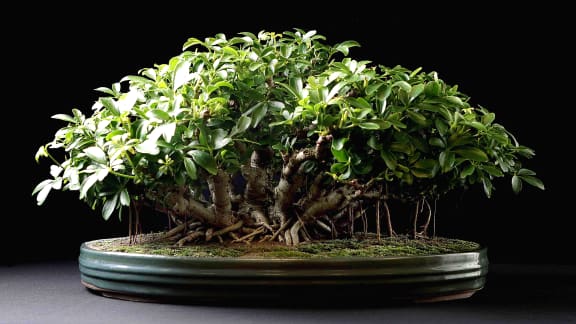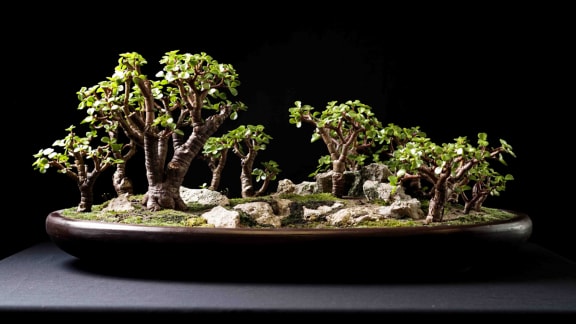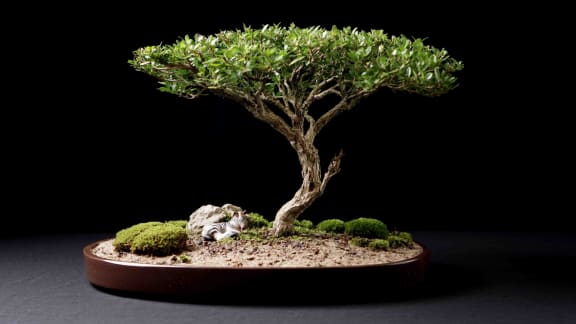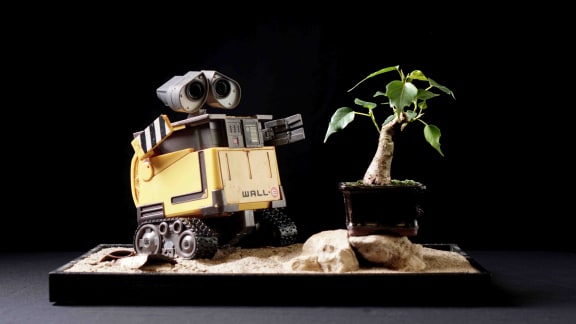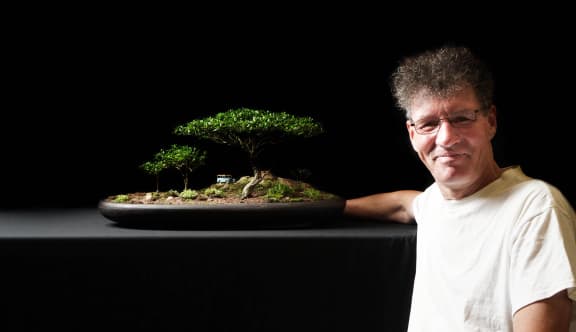What started out as a Chinese, then Japanese, art of cultivating miniature trees in pots now has a whole forest of fans all over the world.
Nigel Saunders, who is based in Ontario, Canada, has become YouTube famous with his carefully curated collection of around 180 bonsai trees.
With over 13 million views and over 100,000 subscribers, Saunders is the most popular bonsai YouTuber in the English language.
Bonsai is the art of growing and sculpting small trees in containers or pots that mimic the shape and scale of full size trees.
It originated in China but was adapted by the Japanese who Saunders says, “transformed it into a serious form of art”.
Saunders says he’s always had a fascination with the miniature and that his interest in it is genetic.
He says his grandfather used to build miniatures for museums in Australia. Some of the things he built included steam locomotives, aeroplanes and sailing ships. Saunders' father also did some model-making professionally.
Saunder says it’s a strange thing why people are drawn to miniatures but that it “changes your view of reality … it brings you into a miniature world”.
Saunders has been growing bonsai trees for 26 years. Before his fascination with the art he had an industrial design career, which included working on military vehicles, and a 3D modelling business. However, he said those jobs were creative in that you have to come up with solutions but not creative in the way of art, which is where his passion lies.
“I’ve always been a mix of mechanical and art and bonsai is similar, it’s a mix of horticulture and art,” he says.
Saunders says working on a little piece of nature makes you appreciate nature itself.
“Taking care of a little tree makes you realise how frail the world of nature is.”
So how do you make and grow bonsai trees?
Firstly, one of the big lessons Saunders says he learnt is that you need to respect the health of the plant first.
“You can’t work on a plant or shape it or prune it unless the tree is really healthy and you know it will recover.”
He says at first when you get into bonsai you want to do everything at once, you want to re-pot the tree in a pot, you want to shape it, prune it and usually the trees die.
But with experience you learn to do one thing at a time, he says.
“You can re-pot it one year, two years later re-prune it, there’s no big rush to get the tree finished, which they’re never finished, but you've got to let the tree do its thing and then you can do your thing.”
Saunders creates the landscapes drawing inspiration from all over the world. He has African landscapes and Canadian landscapes.
“You get the same impression looking at it as you would visiting it in real life,” he says, “It takes you to that place.”
Saunders uses the internet to do all his research. He says it allows you to research all the strange and unusual trees that you may not be familiar with.
“I’ll spend hours looking at photographs of Africa and then I’ll put all these ideas into a landscape.”
When he starts a tree he researches it and then will determine what style suits it, usually its natural form.
“I try not to manipulate the tree too much,” he says.
Saunders doesn’t artificially age his trees and prefers for the trees to get old by themselves.
He says it’s common to strip branches to look like dead wood and bleach the wood on the trunks to look like an old mountain tree.
However, he said the style is up to the person creating it but that the bark of the tree gives away the age of it anyway and that that can’t artificially be changed.
Saunders started most of his trees from seeds or young cuttings.
He says one of the most important parts of creating the bonsai is root pruning, which gives the trees its vital nutrients and keeps it miniature.
“I rake and prune the roots to develop a finer root system and eventually it looks miniature.”
The art can be very time consuming and doesn’t happen in an instant.
“You have a goal in mind and sometimes you don’t see the effects of what you envisioned until maybe 20 years later, but you have a plan and hope you’re doing the right things. You guide the tree to look like that tree you envisioned,” Saunders says.
Speaking about the art he says it teaches you discipline.
“You can’t go away for four days and not have someone water your trees, you have to be there … you have to shape them and keep them away from pests.”
The most challenging trees Saunders has worked on include a Yaka forest, an aloe vera bonsai and a crown of thorns which involved a cactus succulent.
“I believe you can turn any tree into a bonsai,” he says.
Saunders has bonsai trees from continents including Australia, Africa, South America, North America and Europe.
But none from New Zealand yet because of the biosecurity measures in place.
Responding to the criticism
Saunders says that he has received some criticism from people concerned about nature being manipulated but as well as earlier mentioning that he doesn’t like to artificially age the tree, he also says he doesn’t like collecting trees from nature.
Instead he collects his trees from construction sites, backyards or grows them from seeds. He prefers to leave trees in mountains growing naturally.
He also says he wants his trees to be healthy and growing because a sick weak tree you can’t prune.
“I tell people it’s no different to pruning your hedge or lawn.”
Becoming YouTube famous
Saunders says he came up with the idea to create his own YouTube channel, The Bonsai Zone, after he started watching videos on creating bonsai trees and couldn’t find what he was looking for.
He says they just showed one tree being dug up from the ground and then styled into a bonsai, then you never see the tree again and don’t know what happens.
Saunders says he was inspired to show the progression of the trees.
“My eventual goal is that people can follow along from a seed to a mature bonsai tree over the next 20 years if YouTube is still around.”
One of Saunders’ most popular videos is of his lemon tree bonsai, which has had over 1.6 million views.
He says when he first started making the videos he had 100 subscribers which shocked him and then from there it just kept growing.
Saunders eventually gave up his job to do the videos full time once he learned that it could be monetised.
He says there’s nothing fancy about his videos and that he uses a digital camera and a tripod and changes the angles of the camera so that people can see what he’s doing, unlike some of the other videos on making bonsai trees.
Saunders just bought a greenhouse and plans on expanding his collection. He wants to look at creating some bonsai trees that are exotic and not so common.
Some of the most famous bonsai trees according to Saunders are the bonsai that survived the bombing of Hiroshima and a bonsai forest created by John Yoshio Naka. His masterpiece has eleven foemina junipers which represent each of his eleven grandchildren.
